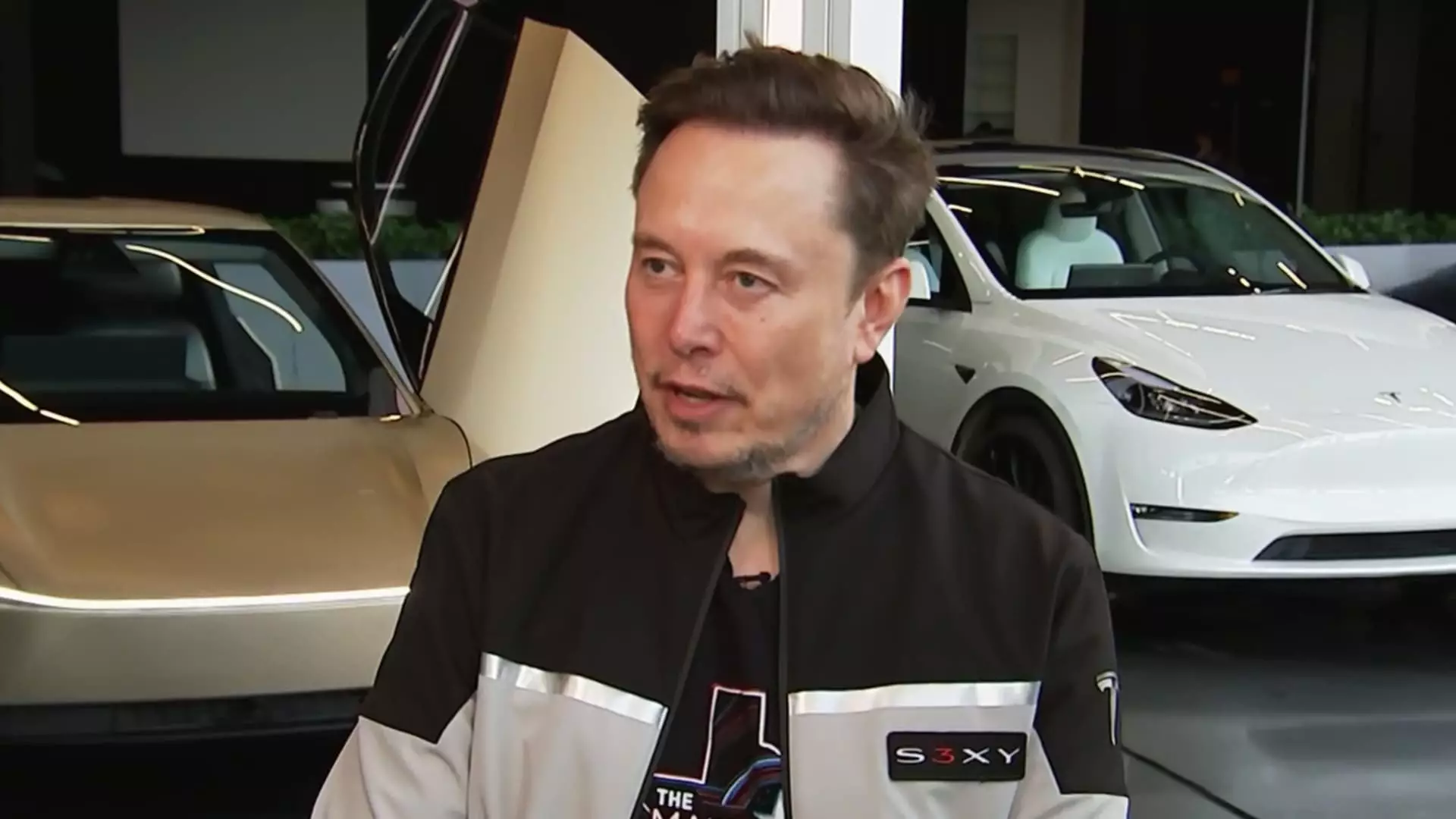Elon Musk has, once again, made headlines with his ambitious announcement that Tesla’s robotaxi fleet will hit the streets of Austin by the end of June. The elusive promise of fully autonomous vehicles has lingered for years, generating a palpable buzz among investors and the tech-savvy public. However, this recent affirmation raises several questions about the practicality and feasibility of such a sweeping innovation. With Musk at the helm, the discussion often leans toward a blend of celebration and scrutiny. It’s essential to navigate through the hype and understand the implications of implementing such technology at a time when trust in corporate leadership is declining.
Promises on Repeat
Musk’s declaration that Tesla aims to roll out its fleet with a small batch of 10 vehicles mirrors his historical pattern of promising advancements that tend to fall short in timelines and execution. For almost a decade, he has touted the arrival of fully self-driving cars “next year.” The skepticism surrounding these timelines is compounded by the reality that successful initial phases have often proven elusive. Even though Musk aims to start small and scale rapidly based on initial success, this method carries enormous risks. Any setbacks could amplify criticism against Tesla and Musk himself, who is already facing a smattering of political and consumer-related challenges.
Competition on the Autonomy Track
Musk boasts that Tesla’s approach is a more ambitious take on robotaxis compared to its competitor, Alphabet’s Waymo. However, in a rapidly evolving technological landscape, ambition alone isn’t sufficient. Waymo has already established a foothold in the driverless ride-hailing market with a fleet executing 250,000 paid trips per week. While Musk dismisses the competition, claiming that Tesla’s camera-based approach eliminates the need for expensive sensors, he overlooks the proven successes of comprehensive systems like lidar and radar. These are not just niceties; they are employed by a multitude of successful autonomous driving startups, representing significant investments in safety and reliability.
The Human Factor: A Dangerous Gamble
The decision to forgo human safety drivers in favor of remote monitoring is a gamble that raises numerous ethical concerns. While Musk promises “geofencing” to control operations, the reality is that even the most sophisticated algorithms can fail. The stakes are particularly high when operating in urban environments with unpredictable dynamics including pedestrians, cyclists, and rogue drivers. Removing human oversight from the equation poses a risk not only to Tesla’s reputation but also to public safety. If an incident were to occur under these conditions, the backlash could be catastrophic, forcing regulators to clamp down on such innovations.
Musk’s Political Ties and Consumer Trust
Musk’s political affiliations, particularly his involvement with the Trump administration, have not gone unnoticed. His comments during a recent earnings call about political concerns distracting consumers reflect a misguided notion. Consumers increasingly factor a company’s ethical stance and leadership values into their purchasing decisions. In an age where corporate accountability is demanded, dismissing the impact of personal political associations on brand loyalty could backfire. As the lead architect of not one but two high-profile companies, Musk’s political actions and statements can have lasting repercussions, making it imperative for him to navigate this delicate landscape with caution.
Complicated Financial Landscape
Tesla’s financial narrative has been tumultuous, with reported declines in automotive revenue. Musk attributed this drop to necessary factory retooling, an excuse that rings hollow in the face of consumer impatience for new products. While he cites a rebound in demand, the absence of concrete numbers leaves room for skepticism. Are we witnessing a genuine resurgence, or is it merely a face-saving claim in light of an exposed vulnerability? When the business world is rife with uncertainties, Tesla’s position necessitates a more robust and transparent disclosure of performance metrics to regain investor confidence.
The Obligation of Leadership
As the richest individual with an estimated net worth hovering around $376 billion, Musk wields immense influence. His commitment to leading Tesla for the foreseeable future further cements his position as a driving force behind the company’s challenging but potentially rewarding technology ventures. However, such power carries significant responsibility. When steering a company that aspires to revolutionize transportation, Musk must ensure the strategies adopted prioritize safety, reliability, and ethical leadership. His legacy will irrevocably shape the future of autonomous vehicles, making it essential for him to transcend the superficial allure of tech dominance and root his ambitions in grounded principles for sustainable growth.

